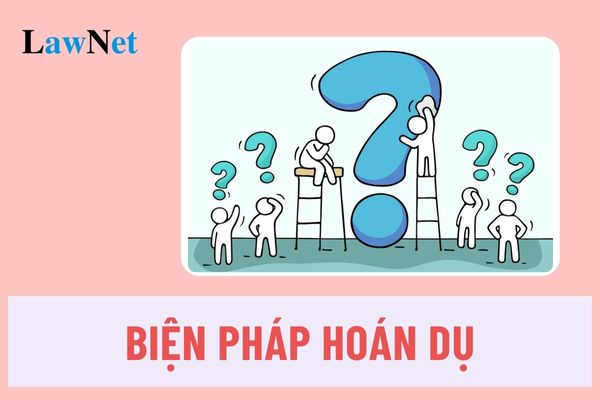What is metonymy according to the Literature knowledge in Vietnam? What are examples of metonymy in Vietnam?
What is metonymy according to the Literature knowledge in Vietnam? What are examples of metonymy in Vietnam?
Metonymy is a rhetorical device where we refer to an object or phenomenon by the name of another object or phenomenon that is closely related to it. The purpose of metonymy is to create evocative, vivid images and to make sentences more concise and meaningful.
Unlike metaphor, metonymy does not rely on comparison but rather on the relationship between objects and phenomena.
Common types of metonymy and illustrative examples:
Using a part to refer to the whole:
"Một bàn tay ta làm nên tất cả." ("One hand of ours can accomplish everything.") (Hand symbolizes the laborer.)
"Cả lớp đang chăm chú nghe giảng." ("The whole class is attentively listening to the lecture.") (The whole class refers to all the students in the class.)
Using the container to refer to the contained:
"Anh ấy có cả một gia tài sách." ("He owns an entire library of books.") (Books here symbolize knowledge, information.)
"Anh ấy uống hết ly." ("He drank the whole glass.") (Glass here refers to the amount of liquid in the glass.)
Using a sign to refer to the object:
"Tuổi trẻ là tương lai của đất nước." ("Youth is the future of the nation.") (Youth symbolizes the younger generation.)
"Những người áo xanh đang làm việc." ("The green shirts are working.") (Green shirts here refer to the workers wearing green shirts.)
Using a concrete object to refer to an abstract concept:
"Cơm áo gạo tiền lo cho cuộc sống." ("Daily bread and butter for a livelihood.") (Here, daily bread and butter symbolize earning a living.)
The effect of metonymy:
Creates vivid and evocative images to help readers and listeners easily visualize and understand the meaning of the sentence.
Makes sentences more concise and meaningful to avoid repetition, making the sentence more succinct.
Enhances the expression of the sentence to help the writer convey their emotions and attitudes subtly.
Note: The above content is for reference.

What is metonymy according to the Literature knowledge in Vietnam? What are examples of metonymy in Vietnam? (Image from Internet)
From which grade do students in Vietnam learn about metonymy?
Based on Clause 2, Section 4 of the General Education Program for Literature issued with Circular 32/2018/TT-BGDDT:
Required competencies
2.1. Required competencies at the elementary level
...
2.2. Required competencies at the secondary level
...
b) Literary Competence
...
In grades 6 and 7: students can recognize themes, understand the subject and meaning of the text read; identify folk tales, short stories, lyrical poetry, and narrative poetry; recognize and analyze the effect of various artistic elements and literary devices associated with the characteristics of literary genres (plot, narrators, character's speech, time and space, rhythm, imagery, and rhetorical devices such as metaphor, metonymy, hyperbole, meiosis).
...
Students shall learn about the rhetorical device metonymy from grade 6. Additionally, according to Circular 32, in grades 6 and 7, students also learn about other rhetorical devices such as metaphor, hyperbole, and meiosis.
What does the Grade 6 Vietnamese Language curriculum include?
Based on Subsection 2, Section 5 of the General Education Program for Literature issued with Circular 32/2018/TT-BGDDT, the Vietnamese Language knowledge for Grade 6 students includes:
- Single and compound words, compound and reduplicative words
- Polysemous words and homonyms
- The meaning of some common idioms
- The meaning of some common Sino-Vietnamese elements (e.g., bat, phi) and the meaning of words containing those Sino-Vietnamese elements (e.g., bat cong, bat dong, phi nghia, phi li)
- Main components of a sentence: expanding the main components of a sentence using phrases
- Adverbials: characteristics, functions in linking sentences
- The use of semicolons (marking the boundary between complex series of enumerations) and quotation marks (indicating an understanding of a word/phrase not in its usual sense)
- Rhetorical devices metaphor and metonymy: characteristics and effects
- Paragraphs and texts: characteristics and functions
- Choosing words and some sentence structures suitable for conveying the meaning of the text
- Text types and genres
+ Narrative text: a story about a personal experience, retelling a folk tale
+ Descriptive text: a description of an activity scene
+ Expressive text: lục bát poetry; a paragraph expressing feelings after reading a lục bát poem
+ Argumentative text: opinions, reasons, evidence; an essay presenting an opinion on a phenomenon in study or life
+ Informative text: headings, subheadings, bold text, bullet points; descriptive text narrating an event; minutes recording an incident or a meeting, discussion
- Language development: borrowing phenomena, borrowed terms, using borrowed words
- Non-verbal communication: pictures, data

